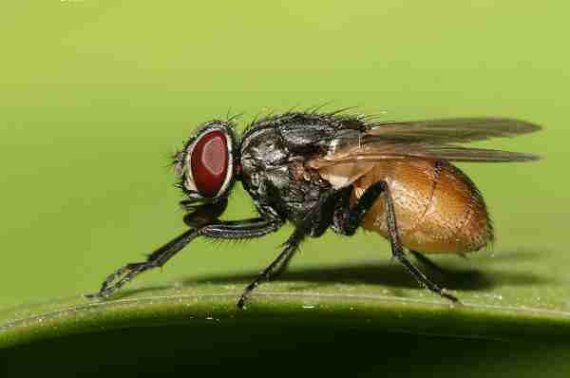She carried out a life-cycle analysis of the cultivation of housefly larvae on a large scale as a source of protein for livestock farmers. There are no such ‘housefly farms’ as yet because feeding leftover food to flies is still banned. Even so, she was able to figure out how the environmental score for insect cultivation would compare with standard animal feed solutions such as soybean meal and fishmeal.
The experimental housefly growers mixed food remains and chicken manure in a tray to serve as feed for the housefly larvae. A big advantage of the fly larvae is that they grow quickly. If kept at a temperature of 27 degrees, they are already big enough to harvest after only five days. This makes houseflies much more productive than mealworms, for example, which need about ten weeks. And the substrate in the cultivation tray can be fermented after the harvesting.
But the climate score for housefly feed is still worse than that for soybean feed despite these advantages. That is because the raw materials for the cultivation of flies can already be used in a beneficial way. The food remains are currently fermented while the chicken manure is exported to an arable farmer in Germany. If that were to stop, there would be less bioenergy and the farmer would have to buy synthetic fertilizer. These indirect effects lead to a big increase in the consumption of energy and poorer CO2 performance.
Van Zanten carried out the study for four companies, including the insect cultivator Jagran and the waste processing company SITA. They wanted to explore the options for insect cultivation in the Netherlands. Vincent Mooij, SITA’s innovation manager, thinks that insect farming’s climate score could be improved. ‘The waste and manure rot and ferment in the cultivation trays, making it far too hot for the larvae. A lot of energy is consumed in keeping the temperature down, but you could also investigate different production processes. That’s why we are currently focussing on energy efficiency in the production process.’
SITA will not be investing in the production of animal feed from flies as long as it is not clear if this is viable from an ecological and economic perspective. Mooij: ‘We currently convert organic waste into energy or compost but we’d like to upgrade it to animal feed. We are monitoring developments in houseflies and black soldier flies as options for insect cultivation. We don’t know yet which it will be.’

